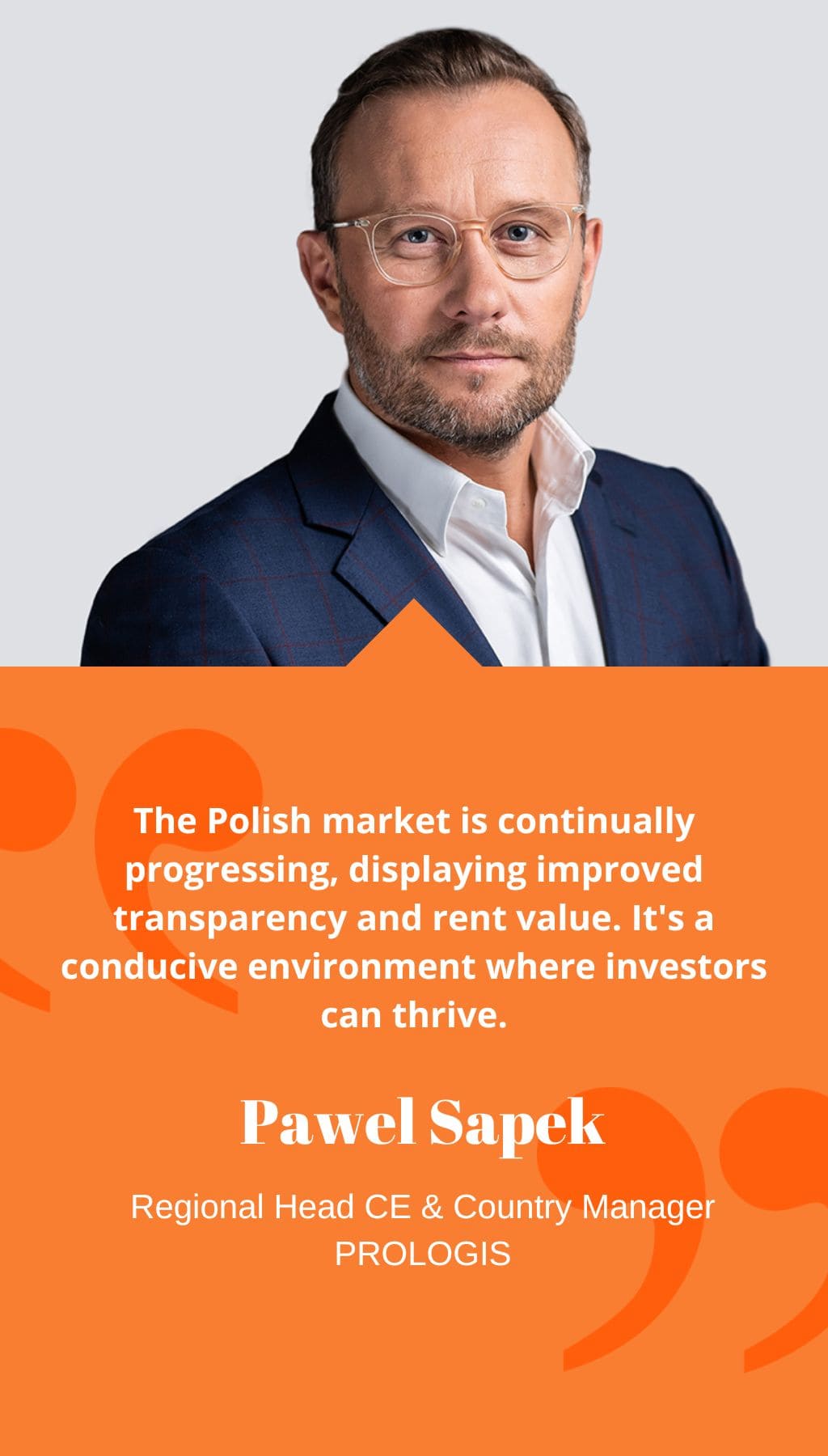
- Poland | 19 February 2021

What vision do you hold for Prologis in the CE region since being promoted to regional head CE two years ago?
Having 25 years of experience in construction and real estate, mainly in automotive project management across Europe, I’ve spent six years at Prologis in Poland, the Czech Republic, Hungary, and Slovakia. We aim to maintain our highest market share status in CE by prioritizing customer-centric approaches and continuous innovation. Evolving alongside new customer needs and industry trends remains pivotal in the ever-changing industrial sector.
How does Poland compare to other CE countries in your wider portfolio?
The CE region has seen consistent growth over two decades, offering significant development opportunities. In CE, we possess 4.2 million m² across 217 buildings, holding a 22% market share. Poland represents our largest CE market, with substantial growth potential, particularly in key urban agglomerations like Warsaw, Central Poland, Poznan, and Silesia.
Retail and residential players are eyeing the logistics sector. What challenges are you encountering in this scenario?
Last year’s market dynamics compelled many investors to diversify portfolios, boosting interest in logistics and industrial segments. Remarkably lower rental levels in Poland, nearly 30% below the Czech Republic and Hungary, benefit customers but could impact investors’ profitability if sustained.
How are you mitigating these risks in the long term?
As market leaders, our role involves educating stakeholders and fostering a balance between rent prices and development costs. Poland needs enhanced transparency regarding these factors. While Poland remains a cost-efficient option for customers, equity in the market is crucial for sustainable profitability amidst rising land prices and development costs.
In light of the pandemic’s impact on logistics, how has your business adapted?
Ensuring the health and safety of our workforce and customers topped our priorities. Fortunately, our diversified and robust portfolio helped us navigate challenges smoothly. While a small percentage of medium-sized customers faced bankruptcy, the CEE market showcased resilience compared to Western Europe. The logistics sector’s significance became evident, with steady demand and recent leases signed with automotive suppliers, mainly for electric car parts.
How is Prologis addressing environmental concerns associated with the logistics industry?
Implementing measures to minimize our carbon footprint is a priority. All new buildings adhere to sustainable certification criteria. We’ve surpassed 200 MW of solar power capacity, targeting 500 MW by 2025. Full LED lighting across our global portfolio and cool roofing solutions are in progress. With a Science Based Target to reduce emissions by 21% by 2025 and 56% by 2040, our commitment extends to partnering with Cool Earth to protect rainforests. Promoting biodiversity through wildlife-friendly parks and PARKlife initiatives is part of our strategy.
What are your priorities for the next few years?
Our focus is on integrated solutions beyond traditional warehouse offerings. We’re venturing into additional services that enhance customer business operations, aiming to become a services-oriented company. Our plan includes combining top-notch logistics infrastructure with financial leasing offers and material handling equipment provision to serve customers better.
Any final thoughts on Poland’s logistics and industrial sector?
The Polish market is continually progressing, displaying improved transparency and rent value. It’s a conducive environment where investors can thrive.














